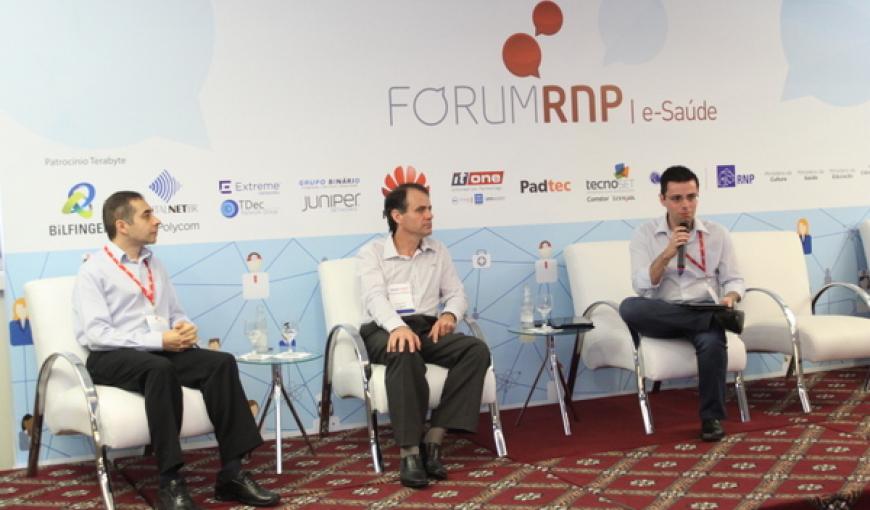Cloud computing at the academy
“The cloud came for easier management. What fits? Anything that can be virtualized,” simplified the State University Paulista (UNESP) Networks Coordinator Carlos Coletti, on the second day of the RNP 2014 Forum.
He explained that the cloud needs high network availability and redundancy, highlighting the increasing mobility on campi. “Today, 35% of traffic is wireless network, that is, used by mobile devices. Users want to access the network anytime, anywhere, with their own device. They don’t want to go to the lab”, he reported.
By showing the Unesp reality - present in 24 cities of São Paulo, with 34 colleges, undergraduate, graduate, and extension courses and more than 15,000 students – he said that “increasingly, people need more processing and disk space”. For him, one of the challenges is to have a technical multidisciplinary team. “Therefore, it is necessary to involve human resources and to promote professional development,” he argued.
In the same panel, the Federal University of São Carlos (UFSCar) Professor Hermes Senger said the institution's cloud project began “thinking about how to modernize the infrastructure of teaching and research, in achieve to do more and better our ultimate goals.”
He stressed that “the UFSCar cloud serves two distinct audiences: the administrative and research ones”. As advantages, he cited the scale economy, the possibility of maintaining a large updated and active structure, and resource sharing.
Senger said the Massachusetts Green High Performance Computing Center (MGHPCC) is a good example of shared cloud management and ratified the importance of establishing a governance model. “We thought in creating a cloud management committee, with the community and IT presence to define the cloud uses,” he explained.
RNP in the cloud
Following that, the RNP Services and Solutions Director José Luiz Ribeiro Filho spoke about the status and prospects of the Brazilian academic cloud implementation. “The academic cloud aims at covering the infrastructure, services, and research, as well as the cloud development for the improvement of the own technology itself,” he announced.
“The project began in 2012 with the diagnosis, planning, and partnership with Huawei. In 2013, we began the pilot and technical negotiations with some brand new applications of the WGs (Working Groups). This year, we began assisted operation. We, RNP, and shelter institutions, INPA (National Institute of Amazonian Research), and IFPE (Federal Institute of Pernambuco) are working closely with Huawei defining processes and services. We already have proof of concept, WG results to start putting services in the settings. In 2015, we will discuss the expansion model, new services, and if the broker model works, its expansion”, he outlined.
